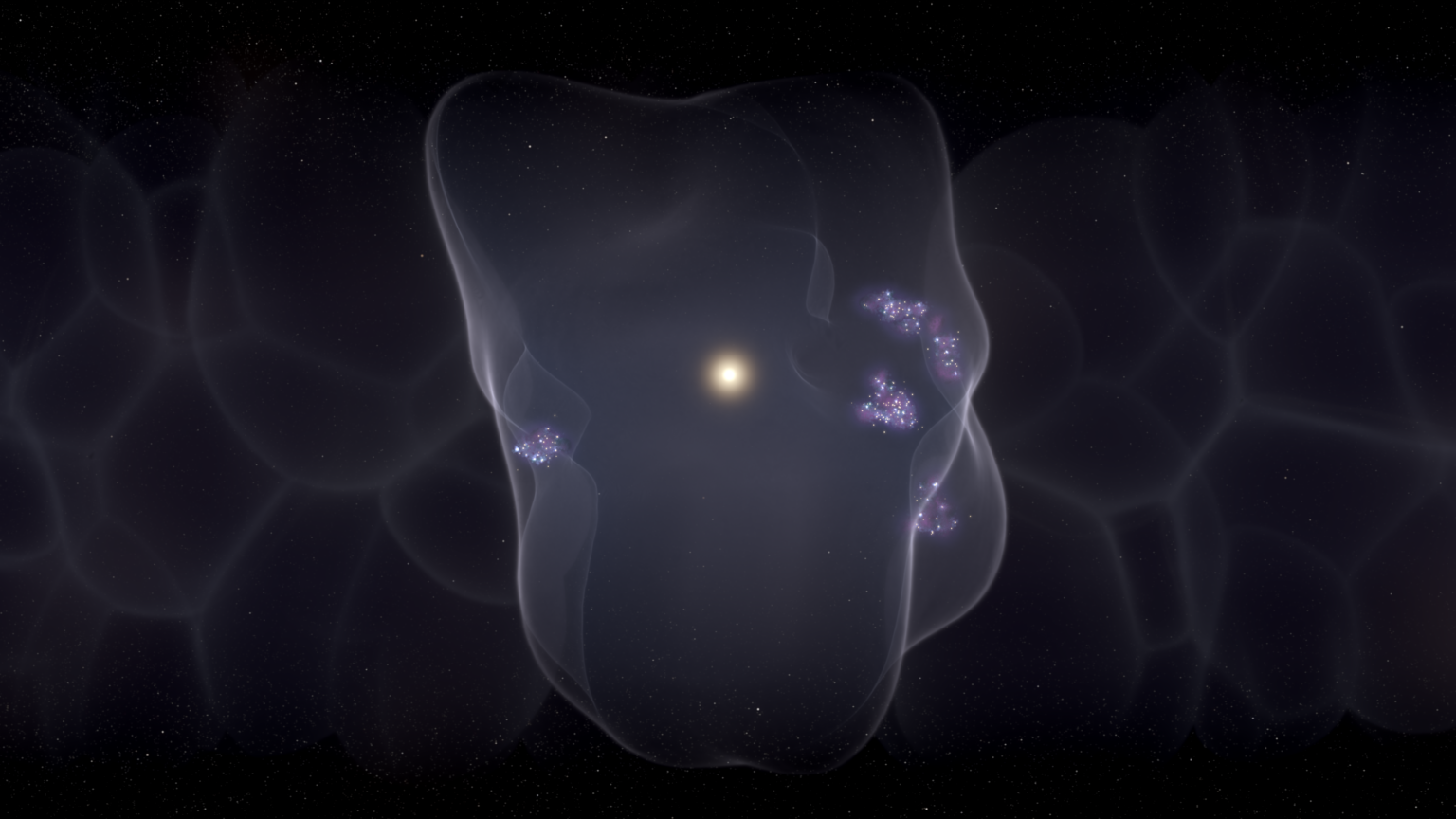Astronomers just mapped the ‘bubble’ that traps our planet
An artist's illustration of the "Local Bubble" with star formation occurring on the bubble's surface. Leah Hustak (STScI)
It's really shaped more like a chimney.
BY TATYANA WOODALL | PUBLISHED JAN 12, 2022 12:00 PM
Many of us may feel like we’re living in a bubble, but Earth actually is residing in one.
Published today in Nature, researchers from the Center for Astrophysics and the Space Telescope Science Institute have created a 3D map that reconstructs the evolutionary history of the “Local Bubble,” a 1,000-light-year-wide cavity of cold gas and dust that’s responsible for the formation of all nearby young stars—including our sun.
The study reveals that Earth and all of the stars and star-forming regions within 500 light-years of the planet reside on the surface of this bubble, which is good insight, according to Catherine Zucker, astronomer at the Space Telescope Science Institute and lead author of the study. Learning more about how the Earth came to be inside the Local Bubble could be yet another definitive step in better understanding our galaxy.
“Essentially we have a front-row seat to the all star formation that’s happening on the surface all around us,” Zucker says. But while astronomers have known about the Local Bubble for decades, this discovery wasn’t years in the making. In fact, it was an accident.
“It actually started out because we just wanted to make a map of all the major landmarks, basically, in our galactic neighborhood,” she says. But what began as a typical foray into studying the spiral arms of the Milky Way, turned into a fantastic revelation after the team noticed that stars seemed to be unifying near the bubble’s surface.
By using a software program called Glue and data from the space observatory Gaia to create a map of where exactly these stars lie, Zucker’s team was able to determine that the bubble’s origin stems from a series of supernovae explosions that date back about 14 million years ago. These cosmic bubbles were created as interstellar gas was pushed outwards by the explosions, forming expanding shells that fragmented and collapsed into nearby molecular clouds.
“Think of the Milky Way as being shaped as a very thin pancake,” Zucker says. As supernovae go off in the center of the disk, the bubbles the reaction creates pokes holes on the surface of the “pancake,” and influences its structure. Multiple bubbles can touch and even collide with one another.
